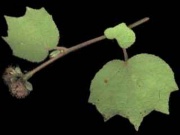Difference between revisions of "Cadillo"
Jump to navigation
Jump to search
m (Text replace - "== Authority ==" to "== Sources Checked for Data in Record ==") |
|||
| Line 16: | Line 16: | ||
Deteriorate in salt water. | Deteriorate in salt water. | ||
| − | == | + | == Sources Checked for Data in Record == |
* ''Fairchild's Dictionary of Textiles'', Phyllis G.Tortora, Robert S. Merkel (eds.), Fairchild Publications, New York City, 7th edition, 1996 | * ''Fairchild's Dictionary of Textiles'', Phyllis G.Tortora, Robert S. Merkel (eds.), Fairchild Publications, New York City, 7th edition, 1996 | ||
Revision as of 13:20, 29 April 2016
Description
A soft Bast fiber obtained from the inner bark of the cadillo plant stalks, Urena lobata. Cadillo fibers are fine in texture and a pale yellow color. They are used for cloth and ropes. This invasive plant was classified as a noxious weed in the U.S. in 1999.
Synonyms and Related Terms
aramina (Brazil); malva blanca (Cuba); guaxima; uaixyma ; Urena lobata
Other Properties
Fiber length 3-8 inches (7.5-20 cm)
Hazards and Safety
Deteriorate in salt water.
Sources Checked for Data in Record
- Fairchild's Dictionary of Textiles, Phyllis G.Tortora, Robert S. Merkel (eds.), Fairchild Publications, New York City, 7th edition, 1996
- Rosalie Rosso King, Textile Identification, Conservation, and Preservation, Noyes Publications, Park Ridge, NJ, 1985
- Website address 1 Comment: USDA PLANT database at plants.usda.gov - gives plant as noxious weed
